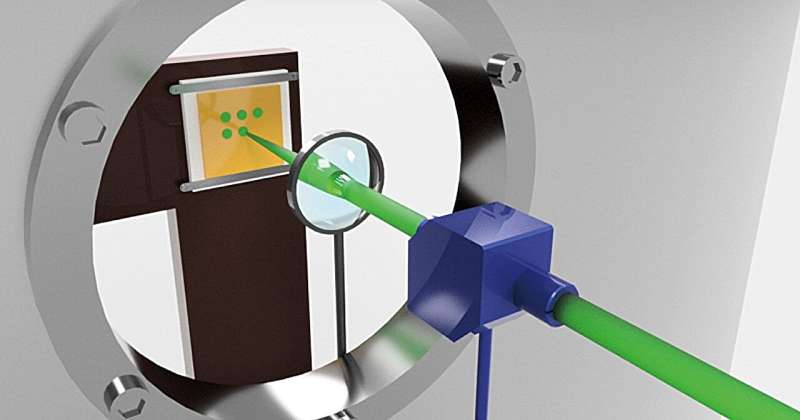This article has been reviewed according to Science X's editorial process and policies. Editors have highlighted the following attributes while ensuring the content's credibility:
fact-checked
trusted source
proofread
New method for creating transparent magnetic materials using laser heating

In a significant advancement in optical technology, researchers from Tohoku University and Toyohashi University of Technology have developed a new method for creating transparent magnetic materials using laser heating. This breakthrough, recently published in the journal Optical Materials, presents a novel approach to integrating magneto-optical materials with optical devices, a long-standing challenge in the field.
"The key to this achievement lies in creating Cerium-substituted Yttrium Iron Garnet (Ce:YIG), a transparent magnetic material, employing a specialized laser heating technique," says Taichi Goto, associate professor at Tohoku University's Electrical Communication Research Institute (RIEC) and co-author of the study. "This method addresses the key challenge of integrating magneto-optical materials with optical circuits without damaging them—a problem that has hindered advancements in miniaturizing optical communication devices."
Magneto-optical isolators are vital for ensuring stable optical communication. They act like traffic directors for light signals, allowing them to move in one direction but not the other. Integrating these isolators into silicon-based photonic circuits is challenging due to the high-temperature processes typically involved.
As a result of this conundrum, Goto and his colleagues focused their attention on laser annealing—a technique that selectively heats specific areas of a material by laser. This allows for precise control, influencing only the targeted regions without affecting surrounding areas.
Previous studies had used this to selectively heat bismuth-substituted yttrium iron garnet (Bi: YIG) films deposited on a dielectric mirror. This allows the Bi:YIG to crystalize without affecting the dielectric mirror.
However, when working with Ce:YIG, an ideal material for optical devices due to its magnetic and optical properties, problems arise because exposure to the air results in unwanted chemical reactions.
To avoid this, the researchers engineered a new device that heats materials in a vacuum, i.e., without air, using a laser. This allowed for precise heating of small areas (about 60 micrometers) without altering the surrounding material.
"The transparent magnetic material created through this method is expected to significantly enhance the development of compact magneto-optical isolators, crucial for stable optical communication," says Goto. "Additionally, it opens avenues for creating powerful miniaturized lasers, high-resolution displays, and small optical devices."
More information: Hibiki Miyashita et al, Vacuum laser annealing of magnetooptical cerium-substituted yttrium iron garnet films, Optical Materials (2023). DOI: 10.1016/j.optmat.2023.114530
Provided by Tohoku University




















